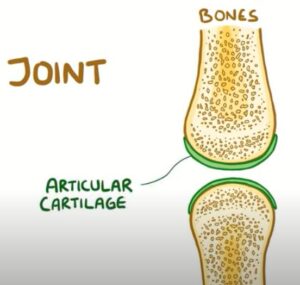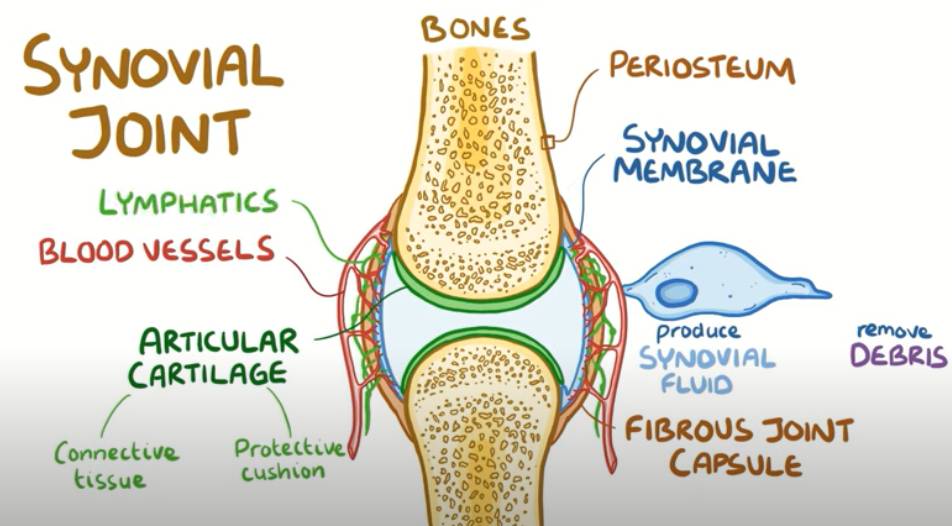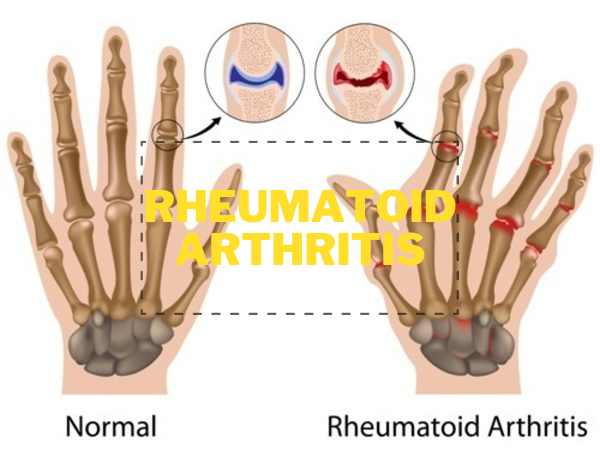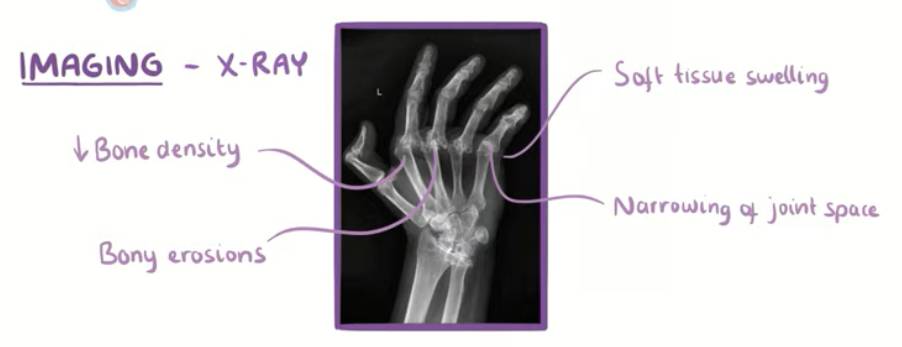In rheumatoid arthritis, “arthr- refers to joints, “-itis” means inflammation, and “rheumatoid” comes from rheumatism, which more broadly refers to a musculoskeletal illness.
Bones provide support for the body and aid in its movement. The place where two or more bones meet is called a joint. Joints may be immovable slightly movable or freely moveable.
A synovial membrane surrounds movable joints inside the membrane synovial fluid lubricates and nourishes joint tissue such as cartilage.
Articular cartilage is a tough slippery covering on the ends of the bones which allows smooth joint movement.
Joints give the body flexibility precision of movement and help in supporting the body’s weight.
Arthritis is any disorder that affects joints it can cause pain and inflammation.
Rheumatoid arthritis is the second most common type of arthritis. The joints most commonly affected area in the wrists, hands, knees, ankles, and feet.
It typically occurs at the same joint on both sides of the body. It can affect other organs in the body such as the eyes, skin, heart, lungs, kidneys, nervous system, and digestive tract.
All right, so a healthy joint typically has two bones covered with articular cartilage at the ends.

Articular cartilage is a type of connective tissue that acts like a protective cushion and is a lubricated surface for bones to smoothly glide against.
One type of joint, like the knee joint, is a synovial joint. A synovial joint connects two bones with a fibrous joint capsule. That is continuous with the periosteum or outer layer of both bones.

Rheumatoid arthritis is an autoimmune disorder this means the body attacks itself by mistake in rheumatoid arthritis. The immune system attacks joint and organ tissues.
Here’s how it happens, the white blood cells of the immune system move into the joint. They release chemicals called cytokines. Which attacks the cell of the synovial membrane.
These chemicals cause synovial cells to release other destructive substances. They also cause the synovial membrane to new blood vessels and form a thickened area called a pannus.
Over time as the pannus grows it invades and destroys areas of cartilage and bone inside the joint. Inflammation causes fluid build-up in the joint making the joint swell.
Eventually, without treatment, the joint space narrows, and ankylosis can occur. Ankylosis is the fusion or growing together of bones in the joint. This results in the loss of the ability to move the joint.
There is no cure for rheumatoid arthritis. However, doctors commonly prescribed various combinations of the following medications that when taken together can reduce inflammation, pain, and slow down joint damage.
Rheumatoid arthritis medications:
These include non-steroidal anti-inflammatory drugs (NSAIDs), Steroids, and standard disease-modifying antirheumatic drugs (DMARDs).
If standard DMARDs aren’t working doctors may prescribe newer drugs called biologics also known as biologic DMARDs.
Diagnosis:
Diagnosis of rheumatoid arthritis usually involves confirmatory blood tests like looking for the presence of rheumatoid factor and anti-citrullinated peptide antibody.
Additionally, imaging studies, such as X-rays, usually reveal decreased bone density around affected joints, soft tissue swelling, narrowing of the joint space, and bony erosions.
Rheumatoid arthritis treatment:
- Physical therapy
- Occupational therapy
- Low-impact exercise (can increase muscle strength and help keep joints limber.)
Rheumatoid arthritis treatment: Surgical procedures
For severe rheumatoid arthritis that has not been helped by other treatments, a doctor may recommend a surgical procedure. For example, a joint replacement procedure also known as an arthroplasty may be recommended.
For joints that are difficult to replace joint fusion also known as arthrodesis may be recommended.
During, this procedure the joint is removed, and the bones are fused together with a bone graft.
Another surgical procedure for severe rheumatoid arthritis is a syndesmectom. During this procedure, the synovial membrane surrounding the joint is removed.
In some cases, an arthritic joint may need to be replaced with an artificial joint.
For more information talk to a healthcare provider.
If you have any questions about Rheumatoid Arthritis please feel free and leave a comment.
Do share this blog with your friends and family!




